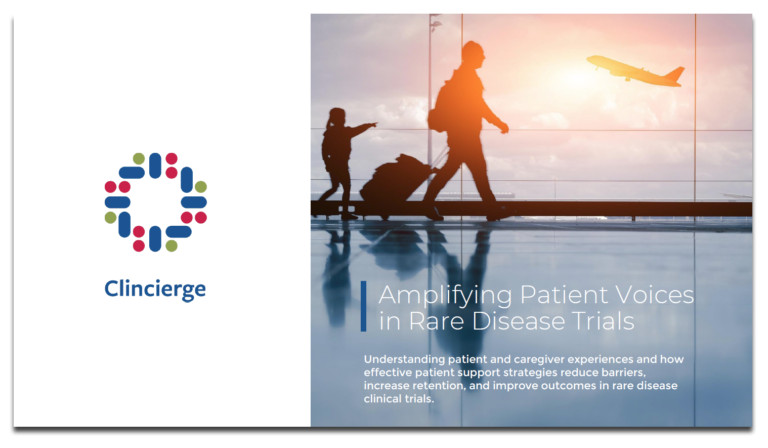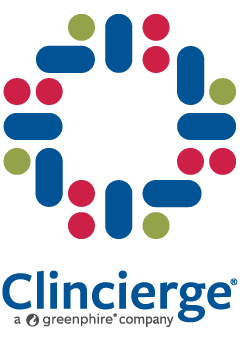A recent article by Applied Clinical Trials references a widely-held statistic that as few as 5% of eligible patients have participated in a clinical trial related to their disease. While some within the pharmaceutical industry debate the validity of this figure, all agree the low level of participation is concerning for all clinical research stakeholders.
Drug trial sponsors require human participants to test the efficacy of a new treatment within the controlled environment of a clinical study. For patients with various cancers, neurological disorders, and rare diseases, participation in a trial is often their only option to receive much-needed life-changing or lifesaving therapy. In the case of rare diseases, for instance, over 95% are currently without a United States Food and Drug Administration (FDA)-approved treatment method.
So why is the participation number so low, and how can the various parties involved in clinical research come together to increase access to and participation in a study?
Increasing Communication Between Providers and Patients
Each stakeholder in the clinical trial process has unique responsibilities in creating and evaluating a new treatment and bringing it to market. It is imperative for these groups to have continuous communication amongst themselves and with the trial participant to increase access to studies and provide patient support throughout the clinical trial process.
Pre-Clinical Drug Development Phase
Clinical Researchers
Drug development begins in a laboratory, where researchers take an average of three to six years to develop the compound before presenting it for use in humans in Phases 1 to 4 of a clinical trial. Scientists in this beginning phase of the process are understandably focused on making a successful treatment for a specific disease. While their endgame is to help all diagnosed with a given disorder, care must be taken to understand the disease’s individualities and each patient’s unique needs. Although researchers will most likely never meet the patients they are working so hard to help, their tireless dedication to science will be felt by many of our generation and others to come.
Clinical Phases
Pharmaceutical Sponsors and Clinical Research Organizations (CROs)
A pharmaceutical or biotechnology company is most often the sponsor of any given clinical trial. At times, these sponsors will work with a clinical research organization (CRO) that oversees the logistics of several of their studies. Sponsors and CROs are the liaison between the discovery and development phases of clinical research and the human trial phases. Again, strong communication and a continued focus on the needs of each patient are crucial.
Clinical Site Staff
Patients in clinical trials attend their appointments at a medical center or clinical site. They must adhere to a pre-set schedule of visits over the course of several months or years to ensure the correct treatment dosage is administered. The site staff is medical professionals who work with the patient to collect important study data and meet crucial trial endpoints. The site staff is in contact with the participant for the length of the trial and can answer any questions regarding the medication dosage and visit schedule.
Healthcare Providers
Patients generally receive their diagnosis from someone providing them with medical care, such as a primary care doctor or specialist. This individual has worked with the patient throughout the diagnostic process necessary to reach a disease confirmation. At the point of diagnosis, the healthcare provider will interact with the patient to ensure they understand their disorder, and together they will begin to develop a care plan. Many times, the patient is experiencing emotions of fear and uncertainty, so it is vital for the patient to have a high level of trust in the medical professional and their level of knowledge.
Often, the doctor refers the patient to additional specialists to assist in the care, and it is vital to keep the same level of open communication and trust throughout the process. It is also essential for primary care doctors and specialists alike to be aware of any clinical trial options for their patients. In the case of rare diseases, for instance, there is a much smaller number of study options available, and patients may need to travel a far distance for participation. As clinical trials are often the only treatment option for these patients, they must be able to learn of them through their medical connections.
Each group of clinical trial stakeholders listed above has its unique purpose and function within a study. However, they must all collaborate and communicate throughout the study process to provide a safe and effective trial to the most extensive group of participants. It is easy to see how communication can be missed or misconstrued with various parties involved in the clinical trial process.


Improving Patient Recruitment Efforts
Patient recruitment for clinical trials will increase with additional knowledge of clinical trials and communication between study stakeholders. Doctors can refer their patients to available research opportunities, and patients can evaluate the options they are presented with.
Initiatives have been created for medical staff and advocacy groups to enter the communities of traditionally underrepresented demographic groups. These informational sessions introduce available clinical trial options and are often held in churches, recreation centers, clinics, and other places where groups come together. Trust is built between the community and the clinical trial industry by providing information and answering questions about the clinical trial process. This heightened level of understanding and confidence in the research process translates to increased participation in and diversity within clinical trials.
The more diverse a clinical trial is, the more complete the data collected throughout the study will be. Also, better information will be available on how the drug will affect those of different cultural backgrounds before the drug hits the market and becomes available for broader use. Current initiatives are working to increase diversity, but a continued industry-wide commitment to diversity is needed.
Increasing Access to Clinical Trials
A recent study found that between 2000 and 2020, almost 80% of all clinical trial participants in the United States (US) were white. Other participation data discovered include:
- Black – 10%
- Hispanic/Latino – 6%
- Asian – 1%
- American Indian – 0%
In a country as diverse as the US, the percentages above are not representative of the many racial and ethnic groups comprising our population. Several factors contribute to this disproportionate amount of whites in clinical trials, including both perceived and actual barriers to clinical trial participation.
Removing the Burdens to Participation
In order to increase clinical trial participation, we must first uncover and understand the many perceived and actual barriers patients face when choosing to participate.
- Emotional: When receiving a new diagnosis, many patients report feeling anxious, scared, and stressed about entering a clinical trial and unsure about what the trial process will entail. Some feel isolated by their disease and have few resources available.
- Financial: Clinical trials are often conducted at large medical facilities in major cities. Patients living in rural areas or with a rare disease with only a few study options must often travel far distances to receive treatment. They worry over the cost of airline or rail tickets, hotel accommodations, ground transportation, parking and tolls, meals, and daily incidentals. Many participants must also miss work to attend their appointments, so they are already facing additional financial issues.
- Logistical: All of the financial burdens listed above also have a logistical component. Patients and their caregivers are often responsible for making all of the plans related to travel to their site visits, including booking flights or trains, securing available and accessible accommodations, and planning ground transportation in a new city. Added to the obstacle of the disease itself, these logistical challenges often leave patients questioning the viability of trial enrollment and completion.
For additional responses on burdens to clinical trial participation, please view our Voice of the Patient eBook.
Utilizing a Patient Concierge Services Company to Increase Clinical Trial Participation
When pharmaceutical sponsors and CROs utilize a patient concierge services company, the burdens of clinical trial participation are removed for the patient and their caregiver. They are paired with a coordinator who speaks their native language, lives in their time zone, and understands the cultural nuances of their country. The coordinator learns the individual needs of the patient and their preferences: how they like to travel, what amenities they need in a hotel room, and how they prefer to be reimbursed for incidental expenses, to name a few. This coordinator is introduced at trial enrollment and remains with the patient throughout the length of the clinical trial, always reachable by cell phone and offering support as needed.
When patients feel supported, they stay engaged through trial completion, benefiting themselves and other clinical trial stakeholders. Suppose more pharmaceutical sponsors and CROs offered patient concierge services to their study participants – the 5% participation statistic would rise while producing the added benefit of increased diversity in clinical trials.



